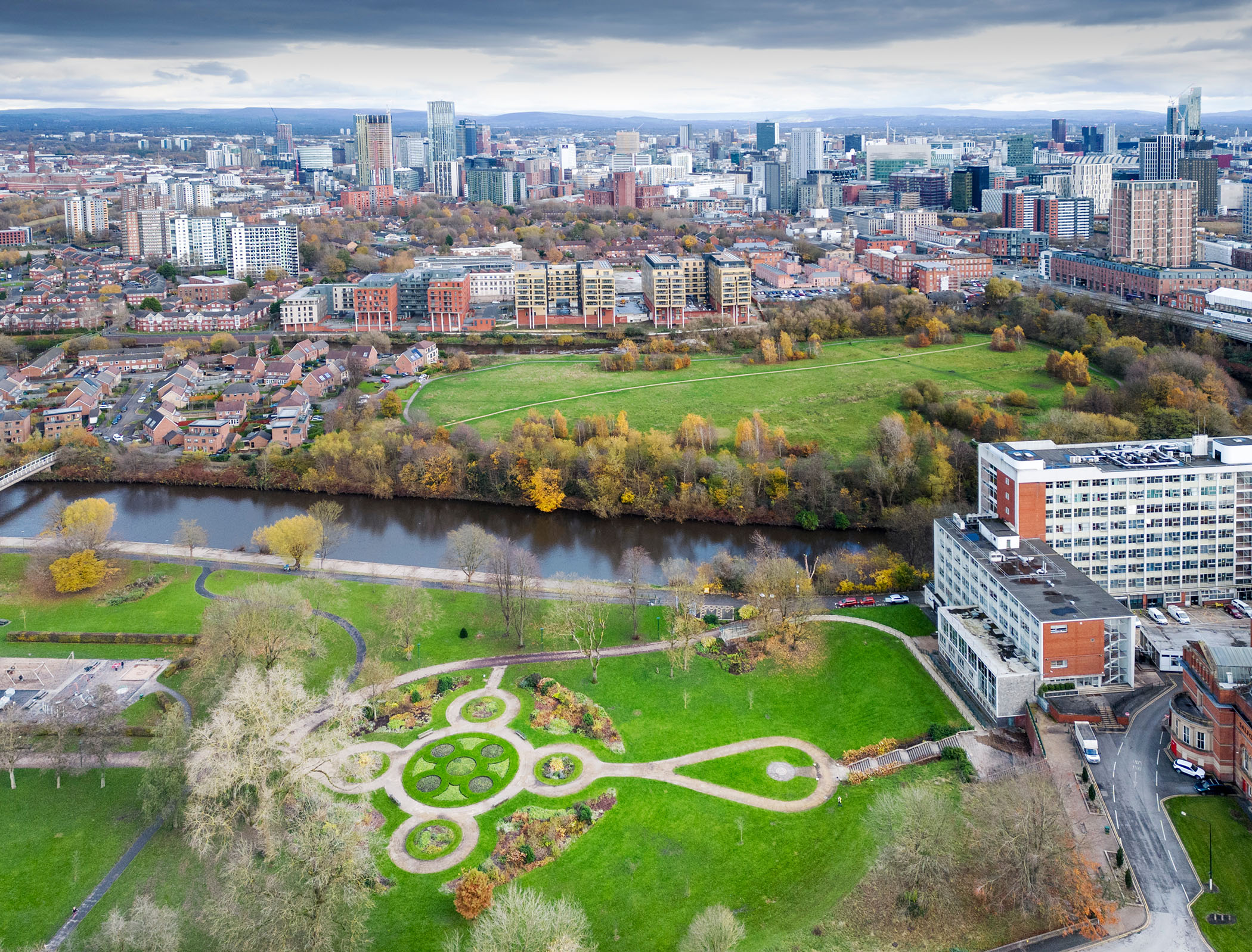Pioneering Peel Park Protected and Joseph Brotherton Statue Listed
Dating back to 1846 as one of the first free municipal public parks in a major industrial city, Peel Park has been registered at Grade II by Historic England together with a statue of Joseph Brotherton MP, which has been listed at Grade II by the Department for Culture, Media and Sport following advice from Historic England.
The park's historic value is heightened by its association with the artist LS Lowry, who trained in the neighbouring Peel Building and featured the park in several of his paintings and drawings.
Planned to be accessible to all, with a focus on play, sport, and promenading, Peel Park showcases visionary design elements for its time. The park's design by Joshua Major, a nationally recognised landscape gardener, adds a layer of distinction to its heritage.
The lower park of Peel Park retains the original design features, with lawns defined by tree-lined paths, areas for play and sport, and beds and paths dating back to 1851.
Peel Park's significance is enhanced by its close relationship with listed buildings, such as Salford Museum and the Peel Building, and its historical connection to Queen's Park and Philips Park in Manchester (together, the first free municipal public parks in a major industrial city).
Joseph Brotherton MP statue
The 1858 statue of Joseph Brotherton MP, which stands within the park, has also been listed at Grade II. Brotherton, Salford’s first Member of Parliament and a prominent campaigner for parliamentary reform, championed causes including free trade and pacifism and chaired a committee set up in the 1840s to create suitable parks for the rapidly expanding population of the area.
Brotherton’s statue has substantial artistic merit as the work of the notable designer, Matthew Noble, who acted as Salford’s sculptor in residence. The sculpture portrays the MP in his natural element as a speechmaker, with a cotton bale and cloth depicting the source of Brotherton’s wealth.
The decision to add the park and statue to the National Heritage List for England follows extensive restoration work carried out by Salford City Council, with the statue of Joseph Brotherton returned to its original place in 2018.
Peel Park is an excellent example of early municipal park development. Its association with influential figures in social history such as Joseph Brotherton MP and the artist LS Lowry, together with its lasting impact on park design, justifies its place on the national register. Peel Park has long been a cherished space for the community, offering a unique blend of history, recreation, and natural beauty. Its registration at Grade II will not only preserve its rich heritage, but also reinforces its role as a public space, for the enjoyment of everyone, for generations to come.
This is really welcome news that this important statue and our historically significant park have been entered onto the National Heritage List for England. What this means is that these two hugely important pieces of our city’s heritage are now protected for future generations to enjoy and discover.





